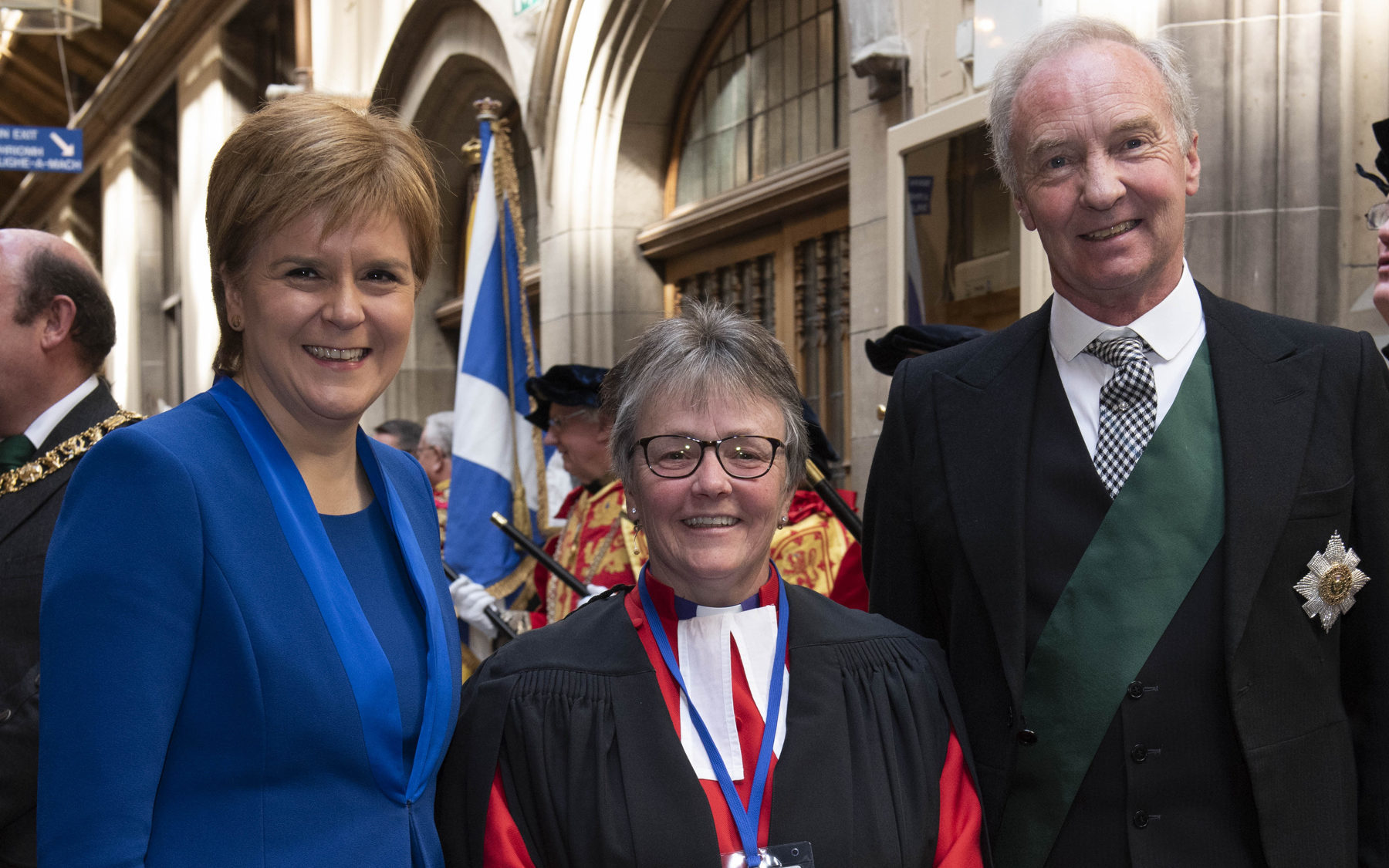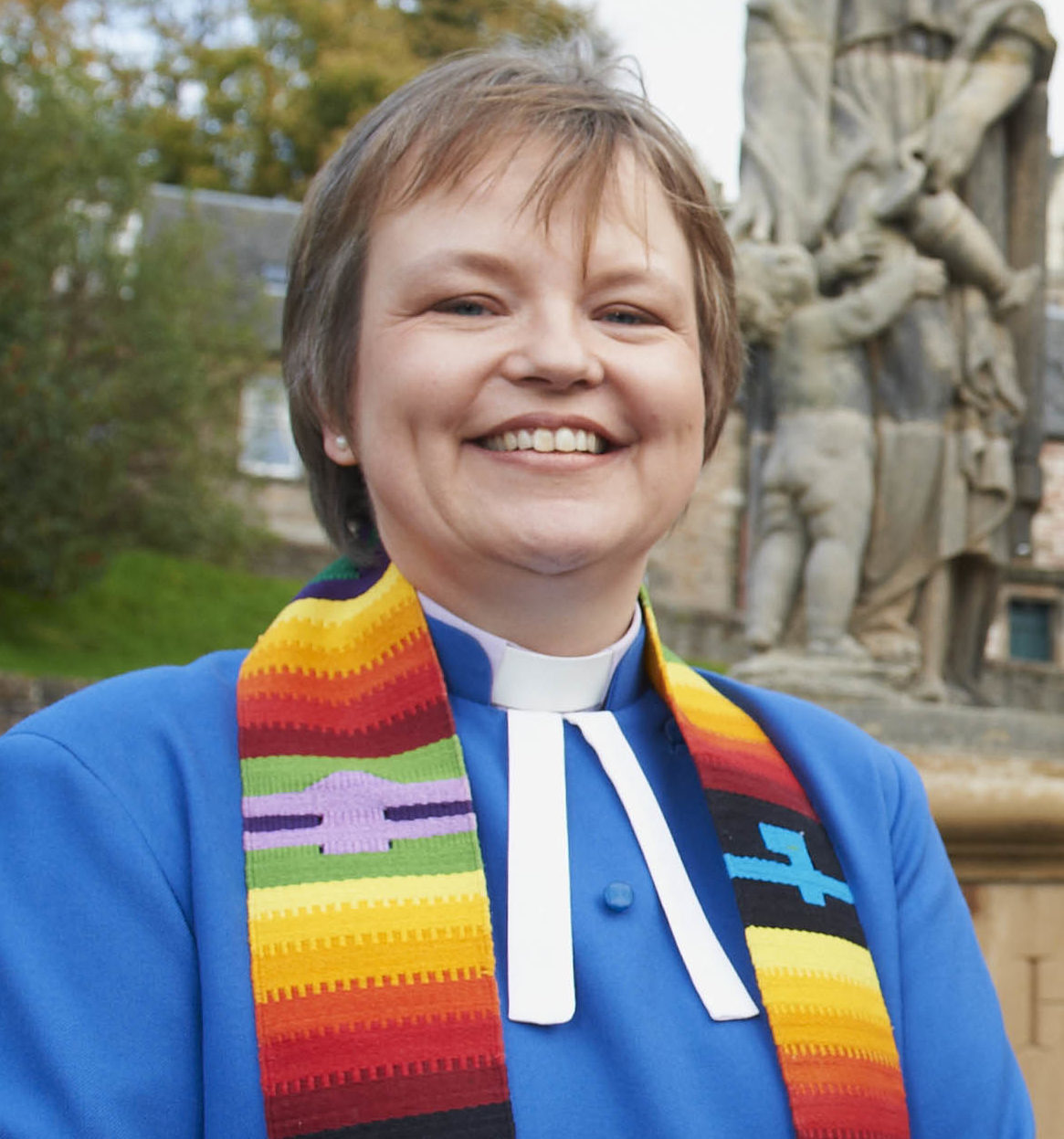
THE new Moderator of the Church of Scotland wants to highlight the importance of walking to improve mental and physical health during her year in charge of the Kirk.
The annual General Assembly got under way in Edinburgh yesterday with Rev Susan Brown, 59, saying she was “deeply moved and honoured” to be chosen for the role.
She is only the fourth woman to hold the title.
Mrs Brown – known for having been the minister who married Madonna and Guy Ritchie in 2000 – said she wanted to raise the profile of the ancient spiritual tradition of walking.
Around 730 commissioners from Scotland and beyond are expected to attend the General Assembly where they will discuss a new plan to reverse dwindling revenues and congregations.
The kirk has seen congregational giving fall by nearly £2 million over the last two years and is considering selling off its Edinburgh HQ.
Mrs Brown, the minister of Dornoch Cathedral in the Highlands, said: “The prospect of becoming Moderator of the General Assembly is slightly scary but incredibly exciting.
“It will be a challenging year but I am really up for it.
“As the ambassador for the Church, I am really looking forward to meeting people and hearing their stories as my theme is ‘walking with’.
“I also want to highlight how important walking, which is an ancient spiritual tradition, is for our physical and mental health, an issue that I plan to raise with political leaders.”
The General Assembly meets for a week every year in May. It has the authority to make laws determining how the Church operates and can also act as the Kirk’s highest court.
During the Church of Scotland’s Assembly on Tuesday, a public procession will take place to mark 50 years of the ordination of women within the Kirk.
Yesterday there was a key vote on whether to allow ministers to conduct same sex marriages if they wish to do so.
The motion orders the kirk’s Legal Questions Committee to draft a Church law that would permit such a move.
If passed, the motion would give the committee two years to come up with the draft law, with a final vote expected at the 2021 General Assembly.
The minister
Rev Fiona Smith gave up a career as a lawyer in London to become a minister in Inverness.
She remembers her appointment in 2010 raising a few eyebrows but Fiona, 48, feels times are changing.
“When I worked in the City of London, there were very few women so I think the Church of Scotland has been pioneering,” said Fiona, from Ness Bank Church.
“It has definitely made women feel more part of the Church. It has a huge impact for them to think, ‘Gosh, that’s a woman up there’.”
Fiona will be in the procession on Tuesday and feels the decision taken half a century ago can’t be overstated.
“With Susan Brown installed, all but one person at the top table of the General Assembly will be a woman, which is marvellous,” said Fiona.
“The moves made in 1968 were very progressive and it’s lovely there have been women ministers for the entirety of my life.
“It was so forward thinking and worthy of celebrating.”
The researcher

The challenges of the Church of Scotland have been catalogued by independent researchers, ScotCen.
Their Scottish Social Attitudes Survey has recorded the decline over the past two decades.
The most recent research found just 18% of people saying they belonged to the Kirk, down from 35% in 1999.
“That is a pretty serious decline,” said ScotCen’s Ian Montagu.
“As society becomes more liberal, people recognise their religious identity less often.
“There has been a change about how people think on a range of issues including same-sex marriage and premarital sex.
“The legalisation of same-sex marriage reinforced for some the legitimacy of taking a liberal outlook on life.
“If you contrast that with religions seen as bastions of social conservatism, then many people are unwilling to identify with them.
“But religious identity in general is declining among all age groups.”

Enjoy the convenience of having The Sunday Post delivered as a digital ePaper straight to your smartphone, tablet or computer.
Subscribe for only £5.49 a month and enjoy all the benefits of the printed paper as a digital replica.
Subscribe